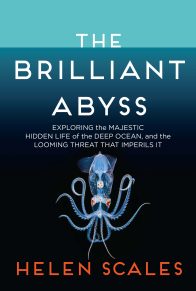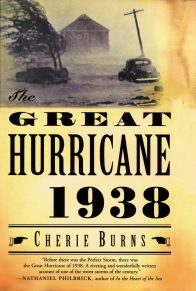When chemicals are spilled in urban centers, sprayed on farm fields, and synthesized in factories, they become hitchhikers embarking on a global voyage. Carried by winds, waves, and rivers, they move drop by drop, migrating from the cities of the United States, Europe, and Russia into the bodies of Arctic animals and people a world away.
The journey of a toxic hitchhiker might begin on a hot, steamy summer day in Chicago, along the shore of Lake Michigan. A fire sweeps through an office building, and the flames reach an electrical transformer, which catches fire and explodes. Thick clouds of smoke clog the sky, and oily liquids called polychlorinated biphenyls spray into the air and leak onto the pavement. These compounds, known as PCBs, were at one time among the most popular chemicals ever produced. First manufactured in 1929 by substituting chlorine atoms for hydrogen atoms in hydrocarbon formulas, PCBs do not burn and are nearly indestructible, so they were perfect coolants, insulators, and hydraulic fluids.
During the first half of the twentieth century, electric companies purchased large quantities for immense electricity-storing devices like transformers. By the mid-1960s, many of the same characteristics that made PCBs ideal for industrial applications began to wreak havoc in the environment, particularly the Great Lakes, the Baltic Sea, and other industrialized areas. Their manufacture was banned in the United States and much of the world in the late 1970s. Yet thousands of old transformers still exist, about 21,000 of them in the United States alone that carry more than 100 million pounds of PCBs. Whenever they catch fire, leak, or are improperly disposed of, the compounds seep into the environment.
When this transformer explodes in Chicago, most of the PCBs, perhaps three-quarters of them, fall to the ground on city streets or drift into Lake Michigan. But some vaporize, turning into gases that float into the air. They spread out randomly in all directions. Some are lifted up toward towering columns of cumulus clouds, rising perhaps three miles up, where they are caught by fast-moving winds. Traveling at possibly 100 miles per hour, the PCBs quickly head east, crossing over Michigan and New York and then the Atlantic Ocean. The winds sweep them north, over Arctic Canada, then Greenland, then a remote string of Arctic islands in Norway. Within days, some of the PCBs from the Chicago transformer have moved across the top of the world, arriving near the North Pole.
As winter descends on Chicago, the PCBs left behind are trapped there, hibernating in a blanket of snow. But come spring, when temperatures warm again, they are set free, and they start globe-trotting. Earth’s atmosphere is like a giant beer distillery, with continuous cycles of heating and cooling and condensing, and chemicals like PCBs are constantly seeking equilibrium in the environment, seeking out cold climates. They move from the air to the soil and the air to the ocean, and back again, in a phenomenon called the “grasshopper effect.” When temperatures rise, the compounds evaporate in the heat, and drift along slowly in the atmosphere at a height of perhaps 1,000 feet. When temperatures cool, they condense–like drops of dew that form on grass–and fall to the ground. Some manage to move only a few hundred miles, from Chicago to Michigan, before they drop onto trees or roads or grass or cropland and remain there, slumbering throughout the cold winter. But come spring, when temperatures warm, they evaporate again, moving with northbound winds. Over the coming years, they continually rise and fall like this, hopping across the world, in search of a cold environment where they can eternally rest. Within a few years, they have joined the others that took a faster route to the North Pole. No one knows the precise amount of PCBs that are flowing to the Arctic, but by one estimate sixty-seven tons, mostly in the form of gases, arrive there every year.
Once there, the PCBs that reached northern latitudes via this atmospheric hopscotch–the fastest and most direct route to the Arctic–join others that took other, slower pathways. Oceans are powerful vectors, their currents slowly carrying masses of contaminants north. In John Donne’s “For Whom the Bell Tolls,” the poem that proclaims “no man is an island,” a clod of dirt from Europe washes out to sea. “We now know where it goes,” says Rob Macdonald of Canada’s Institute of Ocean Sciences in Sidney, British Columbia. “It goes to the Arctic.”
It might take years or decades for a drop of PCBs that originated in Chicago and fell into the Atlantic to flow to the Arctic Ocean, the smallest of the world’s oceans, via the small passages between the continents. Some travel the wide, open waters between Greenland and Norway’s Svalbard islands, but others squeeze in and out of the Arctic between narrow straits separating Canada from Greenland and Siberia from Alaska. The oceans, like the atmosphere, carry tons of contaminants northbound, largely from the United States and Europe. “The ocean is a big lumbering giant,” Macdonald says, “but once it becomes the flywheel, it can become an important source of contaminants.” Rivers also empty into the Arctic Ocean, unloading large volumes of chemicals, particularly from Russia. Drifting sea ice stores and transports them, too. There are even biological messengers–migratory birds, fish, and whales that move chemicals from place to place.
Arriving by all these various pathways, the globe-trotting PCBs permeate everything in the Arctic–its air, snow, ice, fog, soil, seawater, and ocean sediment–in all regions, no matter how remote, from Siberia to Greenland. Upon their arrival, most of the PCBs stop moving. About two-thirds of the PCBs that find their way to the Arctic stay there–perhaps forty-six of the sixty-seven tons are added to its environment every year, while twenty-one tons continue hopping around the world, according to one scientific estimate. These compounds are slow to break down in frigid temperatures, so they endure in the ice for decades, perhaps centuries. Arctic ice melts and freezes in endless cycles, and the chemicals tend to accumulate along the ice edge. This is where they end their physical voyage and begin a biological one.
If scientists were to measure only physical, or abiotic, elements, the Arctic environment would seem almost pristine, among the purest places on the planet. The Great Lakes, the Baltic, and the North Sea, for example, hold ten to one hundred times higher concentrations of PCBs than the Arctic Ocean. The air in Chicago contains a lot more PCBs than the air in Svalbard, Norway. So if the air they breathe and the water they drink and feed in are fairly clean, why do the bodies of the Arctic’s people and top predators carry so much toxic trash? How contaminated an animal is depends not on where it lives but on what it eats–its place in the hierarchy of life, the food chain, or more accurately the food web. Capping a lush green and blue planet, the Earth’s circumpolar north looks bleak and uninhabitable but in reality its 13 million square miles–as vast as the entire continents of North America and Europe combined–brim with an array of odd and hardy creatures, from ice-clinging, single-celled algae to polar bears, that can survive nowhere else on Earth. PCBs work their way through this ecosystem from the bottom up. They are absorbed first by sediment on the ocean floor and ice on the surface, and then they infiltrate single-celled plants that bloom during the spring, when light becomes available for photosynthesis. Each individual organism begins to build up the contaminants from its environment–a process called bioaccumulation. These plants, sometimes stretching into ten-foot-long filaments, are then grazed on by the ocean’s zooplankton–tiny, shrimplike crustaceans such as copepods. From there, the Arctic’s food chain spreads into a vast, intricate web, reaching out in multiple directions. The copepods are eaten by cod, the cod are eaten by toothed whales such as narwhals, and the narwhals are eaten by Inuit hunters. Ringed seals eat the cod and then polar bears and human hunters eat the seals. Walrus feast on the copepods, people feast on the walrus. Seabirds eat cod, people eat the birds.
In the Arctic, you are what you eat. Because PCBs are not easily expelled from an animal’s body, they accumulate there–this means that animals at the top of the food web have eaten all the contaminants consumed by their prey and their prey’s prey. Arctic food ladders have as many as five rungs, and at each step up, the chemicals can magnify in concentration twentyfold or more in a phenomenon called biomagnification. Occupying the top rung are people and polar bears, which can carry millions, perhaps billions, of times more PCBs than the waters where they harvest their foods.
This trip through the food web, in most cases, occurs via the fat of animals. PCBs are not water-soluble, they are lipid-soluble, which means they are readily absorbed by tissues with a high fat content, and they cling there, rather than dissolving and flushing out of the body in liquids such as urine. “If you were to ask a PCB molecule where do you like to be, it would say it likes to be in the company of molecules similar to itself. As it looks around, the molecules that are closest in chemical nature to PCBs are fats, or lipids. So PCBs tend to accumulate in fat,” says Donald Mackay of Trent University’s Canadian Environmental Modelling Centre. In cold climates like the Arctic, sea mammals have an unusual propensity to produce fat. Their blubber is an insulating layer several inches thick, and their milk is mostly fat. Fat stores energy, but it also stores a variety of man-made chemicals, which makes Arctic mammals more susceptible to the buildup of contaminants than leaner animals in temperate zones. Making matters worse, many Arctic creatures experience seasonal cycles of fattening and starvation, and when they use up their fat reserves in winter, PCBs concentrate and migrate into their vital organs. Large Arctic predators such as polar bears and whales also tend to live longer than land animals so their bodies store many decades’ worth of chemicals, increasing in concentration with their age.
A few decades ago, the solution to pollution was dilution–scientists thought that compounds dumped into the vast waters of the oceans would be out of the way and rendered harmless. What they didn’t understand was the underlying biology of the sea–that chemicals have a far greater potential to accumulate in ocean life than in land-dwelling creatures. Author and biologist Rachel Carson, in her 1962 classic Silent Spring, warned of the ‘sinister” nature of chemicals that are passed from one organism to another. She knew that DDT sprayed on alfalfa wound up in the livestock that ate it, and ultimately in the people who ate the livestock. But ecosystems on land are simple–a cow eats grass, people eat the cow. In contrast, the Arctic Ocean has a long and complex food web, with so many layers that toxic compounds build up to extraordinarily high concentrations.
Every human being, no matter where on Earth, contains traces of these toxic compounds because of the chemicals’ ability to persist in the environment and magnify in the foods everyone eats, particularly seafood. But Arctic people are especially vulnerable because of their place at the very top of the natural world’s dietary hierarchy. They eat 194 different species of wild animals, most of them inhabiting the sea. Often on a daily basis, they consume the meat or blubber (muktuk, mattak, or maktak in Arctic languages) of fish-eating whales, seals, and walrus four or five links up marine food chains. In contrast, many urban dwellers have lifestyles that distance them from their polluted environment. Most have abandoned a hunting culture for agriculture, eating much lower on the food web with a diet of mostly land-raised vegetables, grains, beef, and poultry that contain less contaminants.
PCBs aren’t the only hitchhikers determined to settle in the Arctic. Like PCBs, the chlorinated pesticide DDT was first synthesized in the 1800s, although it wasn’t used as an insecticide until the 1940s, after Swiss scientist Paul Hermann M’ller noticed its ability to kill pests. M’ller’s discovery was considered so miraculous that he later won a Nobel Prize for medicine. But DDT began building up in the environment worldwide, wiping out birds and other creatures. By the early 1970s, its use was banned in North America and Europe. Still used in some countries to fight malaria and stockpiled in others, it is still spreading globally, reaching the Arctic by the same atmospheric and oceanic pathways as PCBs.
Today, about two hundred toxic pesticides and industrial compounds have been detected in the bodies of the Arctic’s indigenous people and animals, including all twelve of the ‘dirty Dozen,” the so-called “legacy” organic pollutants such as PCBs, DDT, mirex, dieldrin, and chlordane that are capable of inflicting the most ecological damage. They are joined by mercury, a potent neurotoxin released by coal-burning power plants and chemical factories. Mercury is on the rise in many animals of the Arctic, and so are a variety of new contaminants such as brominated flame retardants, widely applied to plastics and foam, and perfluorinated acids, formerly used in Scotchgard and still used in making Teflon. Unlike PCBs, DDT and brominated flame retardants, which accumulate in fat, mercury and perfluorinated chemicals build up in protein-based tissues such as the liver.
Because these synthetic marvels can survive virtually anything they encounter on their global voyages, they are gradually building up in the remote reaches of the far North to levels that jeopardize people, wildlife, and cultures that have survived this harsh environment for millennia. The Arctic’s people and animals have been transformed into living, deep-freeze archives storing toxic memories of the industrial world’s past and present. This phenomenon is so insidious that no one tapped into it for decades, until one day thirty-two years ago when scientists stumbled on silent messengers that came in the form of plump Canadian seals.













